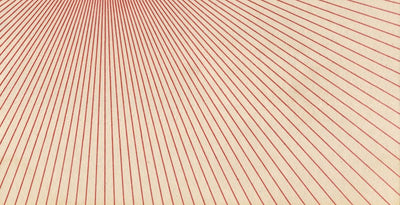In a cottage behind Tinseltown landmark Hollywood United Methodist Church, Chip Weitzner forged an entire world. Astral Travels, released in 1979, is the culmination of years of improvised synthesizer and percussion performances, inspired by global travel and conceived from a rich inner life. “It’s a mellow, meditative, relaxing ride,” he said.
With a suite of keyboards, a few friends, and a Tascam 8-track, analog polymath Weitzner recorded dozens of tapes, and assembled their strongest moments in layers. His lush, textural meditations traverse the far points of consciousness—from the animated and soaring, to the halcyon and still—revealing new paths and movements with each spin. “A lot of music is circular and confined to one space,” he explained. “My style of music is completely improvised and played live. In that mode of playing, you’re out and about, you’re going somewhere. Traveling became a motif for me.”
Weitzner grew up in Brooklyn in the 1950s and was influenced early on by his uncle Bernie Wayne, a songwriter known for co-writing the traditional pop hit “Blue Velvet.” He left the East Coast in the late ’60s for the Bay Area, where he studied at San Francisco State University and lived in Berkley. There he played in his first band, a folk-rock outfit with mariachi flourishes called The Berkley Band. After graduation he landed a gig as a ranger in Redwood Regional Park, in the hills east of Oakland. But he had a ceaseless urge to travel beyond that terrain.
“I got a tape recorder, and I was going to try to do an Alan Lomax thing,” he said. He took a leave of absence from the park and went searching the globe for far-off sounds. In Kolkata, he captured the last half hour of a three-day Hindu festival where holy men and players performed the sacred songs of Ramayana, which describe the events of the Sanskrit epic poem, with chanting and layered percussion. “I listened to that endlessly, it was almost like a clue,” he added.
In 1975 Weitzner moved to Los Angeles, hoping to break into the movie business. He rented two small structures for a song—one to live in, and one for a studio—behind the church near Franklin and Highland Avenues in Hollywood Heights. For the next couple of years he worked the graveyard shift printing film, and played and recorded music in the wee hours of the morning. “For every track on Astral Travels, there’s a stack of tapes I had to go through to get to it,” he Weitzner said. “I was a guy on a mission.”

Album opener and standout “Harmonic Love” features the buoyant basslines of Rushton Moreve, a friend who played in Steppenwolf and co-wrote their hit single “Magic Carpet Ride.” “His playing was phenomenal,” Weitzner remembered. “It’s very unique, loose and bouncy.” For the song he also used an early Chamberlin, a precursor to the modern sampler that stored analogue audio samples on strips of tape, about eight seconds at a time. It produced the ethereal effect of women singing heard throughout. “That’s why they almost sound real,” Weitzner explained.
“Sadly The Morning,” toward the end of the album, is in part a happy accident. During tape playback, he accidentally loaded a reel backwards. “It was so nice and snakey and weird,” he said. “I thought, ‘Maybe it sounds better this way.’” So he layered that slinky motif with other correctly loaded, forward-moving parts—drums and keys—for a sort of low-fi timelessness that suits the experimental ’60s as much as it does the bedroom recordist scene of the ’90s. “Everything good that happens in my world is an accident, a fluke,” he noted.
“Moments of Magenta,” featuring bent synths and sprouts of tamborine, and “Cyan Journey,” a sunny Kraut moment, speak to Weitzner’s work with film and love of color. He’d eventually graduate from the graveyard shift, and go on to work in telecine post production as a colorist. The name Cobalt, too, reflects a similar passion—particularly the shades of blue he used when making jewelry.
By 1978 he’d composed and recorded 11 songs, and committed them to a cassette run of 500. The cover he designed features a pixelated, distorted font—another fortuitous error—that lends an alien aesthetic befitting of the transcendental nature of its contents. He mostly distributed them to friends, and traded with clients he recorded in his studio. “There were a lot of almosts in my career,” he reflected. “In the music world there are these monstrous walls keeping some people in, and many more out.” But for Weitzner, it’s always been about the journey. “If you listen to the music while traveling, it’s better,” he said. “It kind of goes full circle.”
- Erin Osmon



